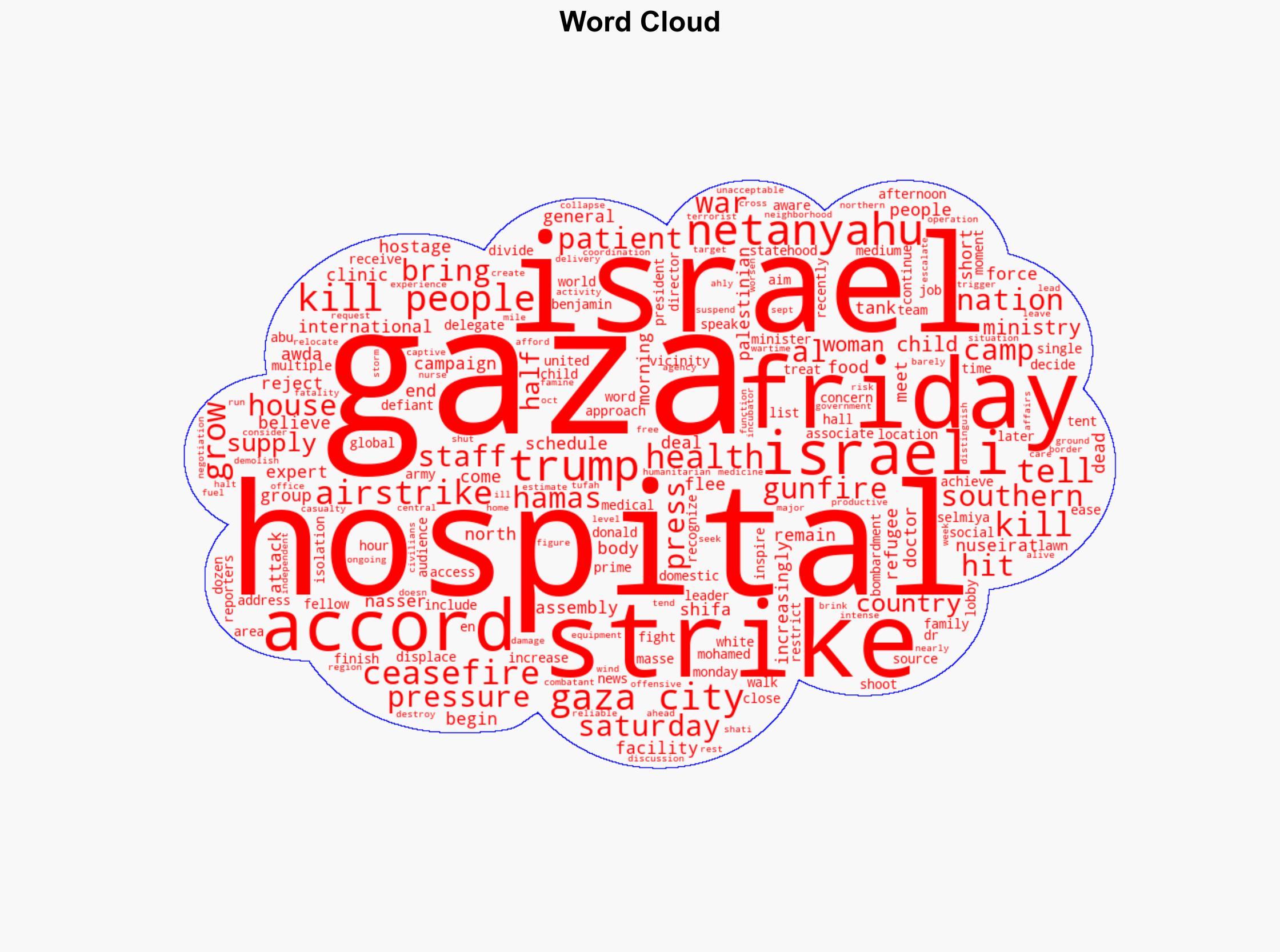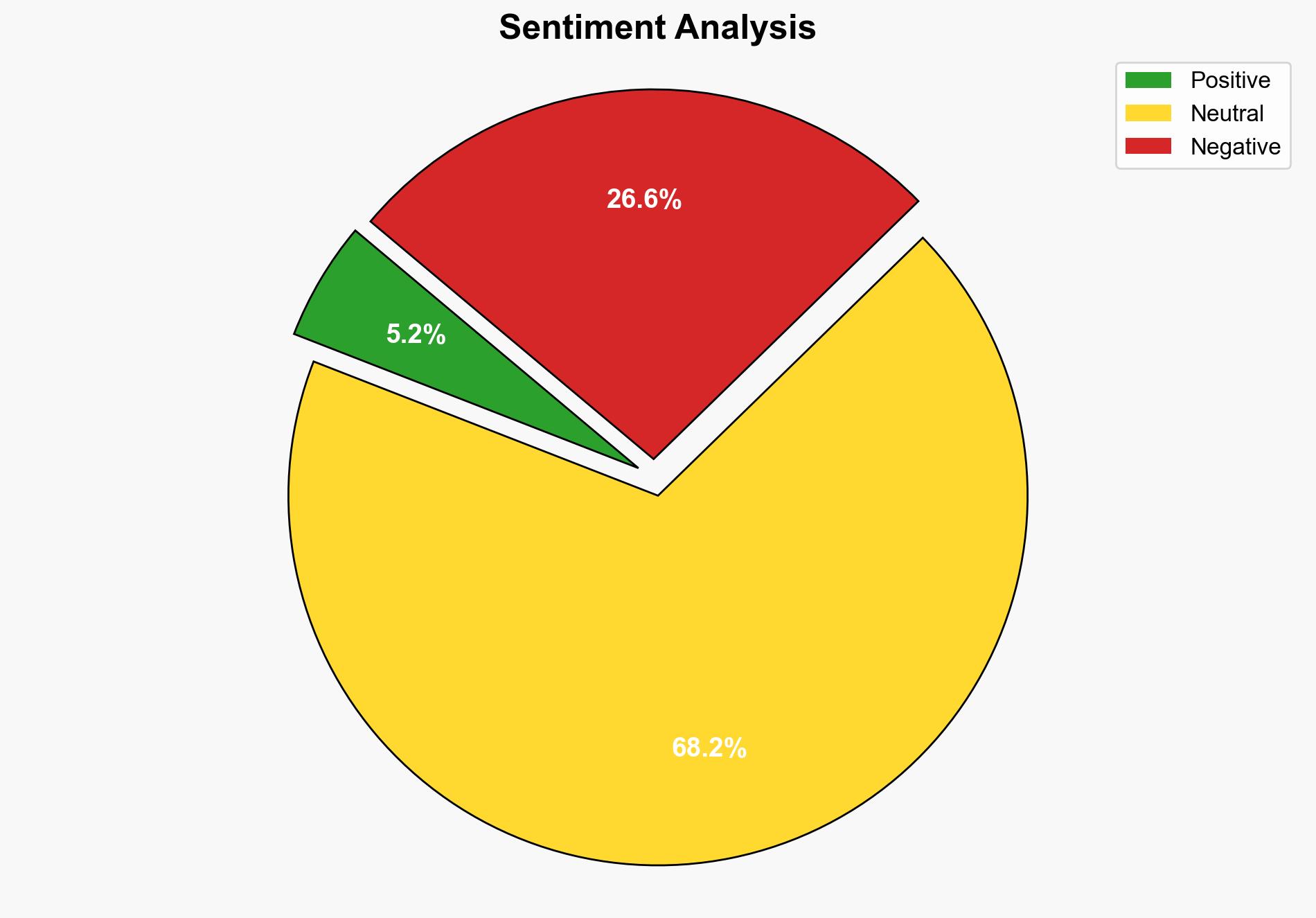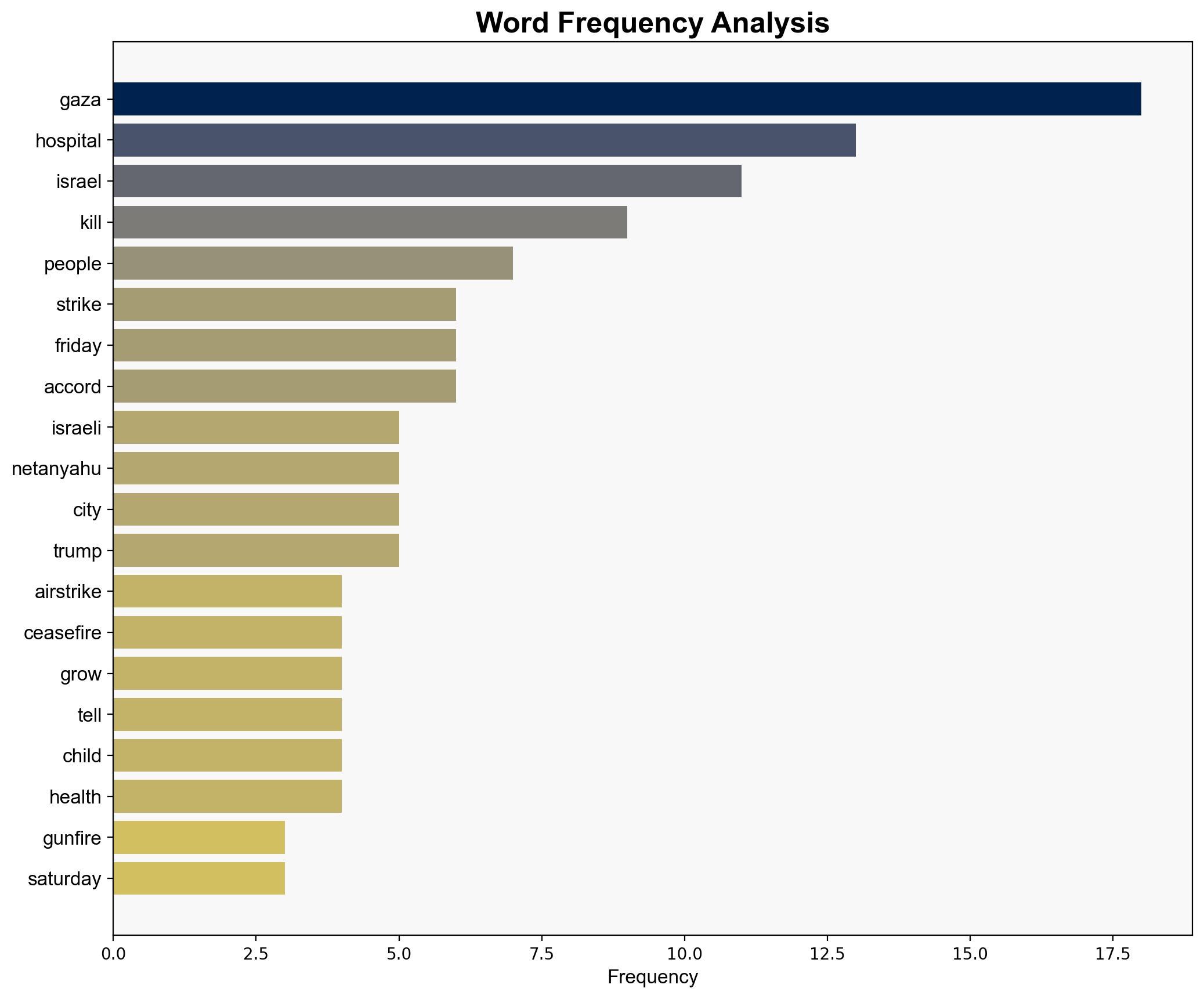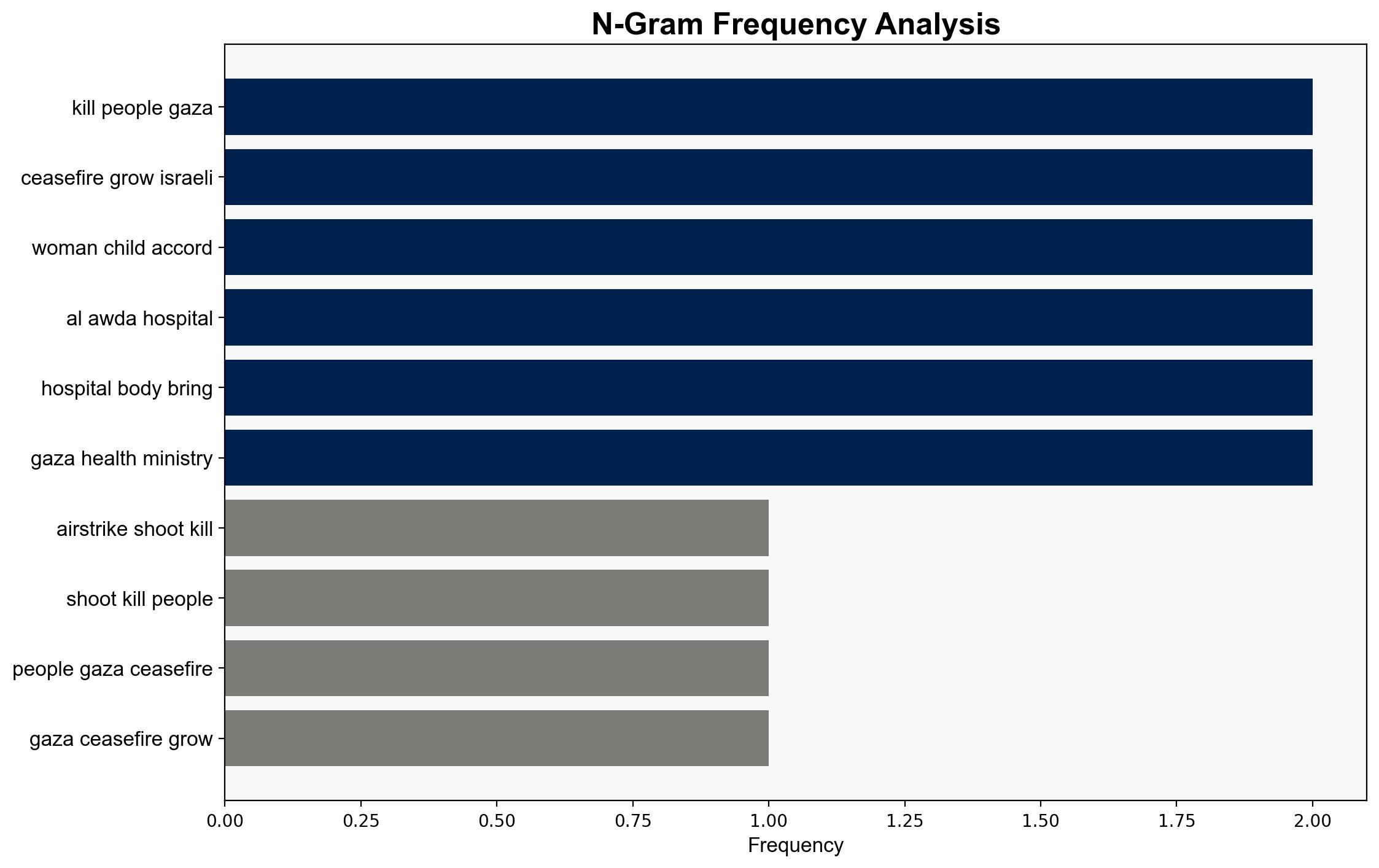Airstrikes shooting kill at least 38 in Gaza amid calls for ceasefire – CBS News
Published on: 2025-09-27
Intelligence Report: Airstrikes shooting kill at least 38 in Gaza amid calls for ceasefire – CBS News
1. BLUF (Bottom Line Up Front)
The current situation in Gaza, marked by airstrikes and gunfire resulting in significant casualties, is under intense international scrutiny with growing calls for a ceasefire. The most supported hypothesis is that Israel is maintaining its military operations in Gaza to achieve strategic objectives against Hamas, despite international pressure. Confidence in this assessment is moderate due to the complexity of geopolitical dynamics and potential misinformation. Recommended action includes diplomatic engagement to facilitate humanitarian aid and de-escalation.
2. Competing Hypotheses
1. **Hypothesis A**: Israel continues its military operations in Gaza to dismantle Hamas infrastructure and capabilities, prioritizing security objectives over international pressure for a ceasefire.
2. **Hypothesis B**: Israel’s continued military actions are primarily a response to internal political pressures and a need to demonstrate strength, with less focus on strategic military objectives against Hamas.
Using ACH 2.0, Hypothesis A is better supported by the evidence of ongoing military operations despite international calls for a ceasefire and Netanyahu’s statements at the UN. Hypothesis B is less supported due to the lack of direct evidence linking operations to internal political dynamics.
3. Key Assumptions and Red Flags
– **Assumptions**:
– Israel’s military actions are primarily driven by security concerns.
– International pressure will eventually lead to a ceasefire.
– **Red Flags**:
– Lack of clear distinction between civilian and combatant casualties in reports.
– Potential bias in casualty figures from Hamas-run agencies.
– Inconsistent reporting on the extent of humanitarian aid restrictions.
4. Implications and Strategic Risks
The continuation of military operations in Gaza risks further humanitarian crises, potentially escalating regional tensions. The situation could lead to increased isolation of Israel on the international stage and strain relations with key allies. Economically, prolonged conflict may disrupt regional trade and investment. Psychologically, the ongoing violence may fuel radicalization and recruitment by extremist groups.
5. Recommendations and Outlook
- Engage in diplomatic efforts to broker a ceasefire and ensure humanitarian aid delivery.
- Monitor regional alliances and adjust diplomatic strategies to mitigate isolation risks.
- Scenario Projections:
- Best Case: Ceasefire achieved, humanitarian aid flows, and de-escalation occurs.
- Worst Case: Escalation leads to broader regional conflict and increased international isolation for Israel.
- Most Likely: Continued military operations with intermittent international diplomatic interventions.
6. Key Individuals and Entities
– Benjamin Netanyahu
– Donald Trump
– Dr. Mohamed Abu Selmiya
7. Thematic Tags
national security threats, regional focus, humanitarian crisis, geopolitical dynamics





